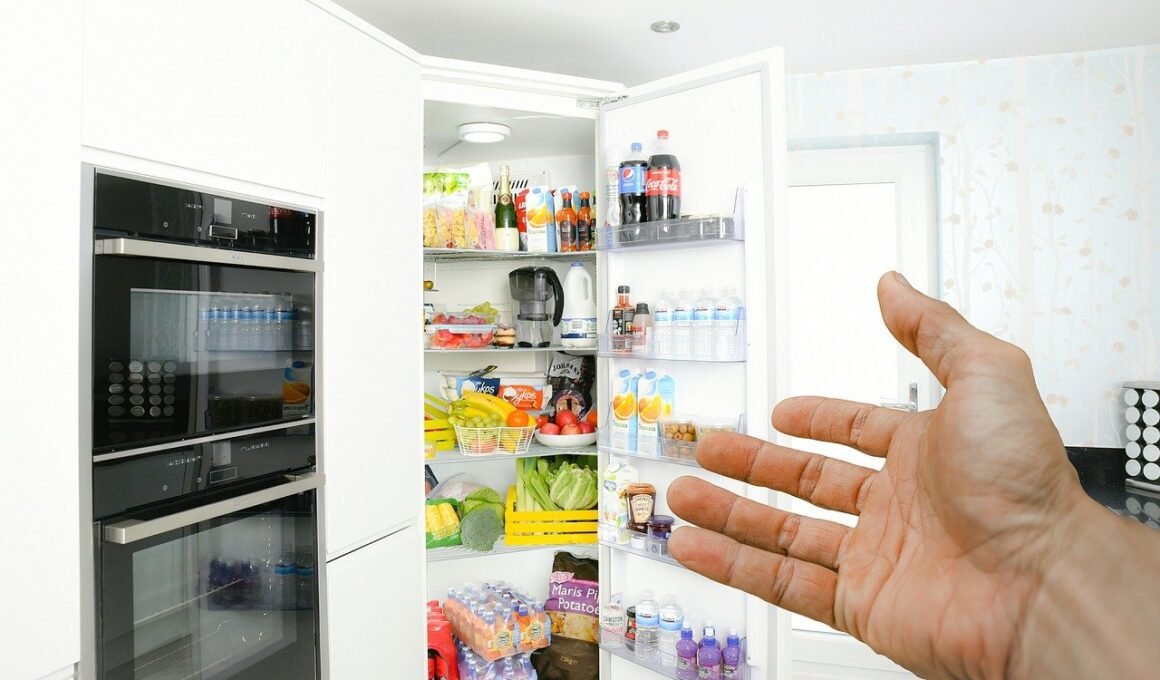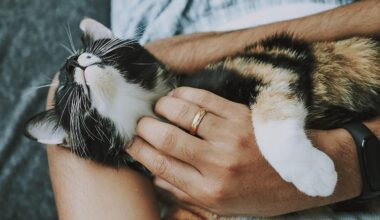How to Store Homemade Vitamin-Rich Cat Food Safely
When preparing homemade vitamin-rich cat food, safe storage is crucial for maintaining its nutritional value and avoiding spoilage. Begin by using clean and sterilized containers to store the food. Glass or BPA-free plastic containers are ideal options, as they help prevent contamination and keep the food fresh. Before placing the food in storage containers, allow it to cool to room temperature. This step is important because placing hot food directly into the fridge can raise the overall temperature inside, which may encourage bacterial growth. Clearly label each container with the preparation date to ensure you track its freshness. It is recommended to use the homemade food within a week for maximum benefit. If you batch make your cat food, consider dividing it into portions before freezing. This practice not only makes thawing easier but also minimizes waste. Always utilize airtight containers for freezing to avoid freezer burn. Keeping small portions helps you serve nutritious meals without compromising safety or quality. Moreover, be cautious while thawing – never use a microwave, as it can result in uneven heating, which can be harmful to your cat.
When making homemade vitamin-rich cat food, another vital aspect to consider is proper refrigeration. Always check that your refrigerator is set to the right temperature, ideally below 40°F (4°C). This temperature range helps prevent the growth of harmful bacteria, extending the food’s lifespan. Store your homemade cat food in the coldest part, usually the back of the refrigerator, as that area tends to maintain a consistent temperature. It’s also beneficial to keep the food separate from other items to minimize the risk of cross-contamination. If you’re unsure about the freshness of the food, look for signs like off smells, discoloration, or changes in texture. If any of these are detected, it’s best to err on the side of caution and dispose of the food. Homemade cat food should only be stored for a maximum of seven days in the refrigerator. For longer storage, opt for freezing. Remember, your cat’s health depends on the quality of the food, so taking these precautions will ensure that they receive the best nutrition possible while avoiding any harmful effects from spoiled food.
Understanding Homemade Cat Food Ingredients
Knowing the ingredients in your homemade vitamin-rich cat food is essential for safe storage practices. Certain ingredients have different shelf lives and need specific storage methods. For instance, meats and fish used in cat food should be fresh and of high quality, as they naturally spoil more quickly than dry ingredients. When using vegetables, opt for varieties that cats can digest easily, such as carrots and peas. These can add nutritional benefits but also have a shorter shelf life, so remember to use them promptly after cooking. To maximize nutrient retention and minimize spoilage, consider purchasing your ingredients from reputable sources, ensuring they are as fresh as possible. Always wash vegetables thoroughly before cooking to eliminate pesticides or contaminants. For grains and other dry ingredients, store them in a cool, dry place to extend their freshness. Airtight containers work well for preventing moisture and pests. Understanding these subtle differences in ingredient storage enhances the safety and quality of your cat’s meals, reducing the likelihood of foodborne illnesses in your feline friend and ensuring they receive all necessary vitamins.
A critical aspect of storing homemade vitamin-rich cat food involves portion control. It is advisable to prepare small batches to avoid storing large quantities that could spoil before use. Pets usually have specific dietary needs, and knowing how much food to prepare ensures you don’t waste ingredients or time. By preparing meals in small, manageable portions, you can easily monitor freshness and rotate your stock, using the oldest food first. Implementing a system to label and date your containers can facilitate this process. Consider organizing your stored food methodically based on preparation dates, with the oldest batches in front. This way, you’ll always access the freshest ingredients first, reducing the chances of spoilage. It’s also helpful to create a feeding schedule so that your cat receives consistent, fresh meals without any inconvenience. Keep track of what your cat enjoys most, and tailor future batches accordingly to minimize leftovers. A good practice is to stay attuned to their preferences, adjusting your recipes to keep their diet varied while ensuring that each meal is rich in the vitamins essential for their health and well-being.
Freezing Homemade Cat Food
When you are storing homemade vitamin-rich cat food for extended periods, freezing becomes an excellent option to preserve flavor and nutrients. However, it requires proper techniques to ensure the best results. First, portion the food into small servings to make thawing easier and more convenient. Use high-quality freezer-safe containers or resealable freezer bags to minimize air exposure. Before sealing, gently press out any excess air to prevent freezer burn, which can lead to dry or unappetizing food. It is advisable to label each container with the date and contents for better organization. A good rule of thumb is to use frozen food within three months to maintain optimal flavor and nutrient levels. When thawing frozen cat food, be sure to do it in the refrigerator rather than at room temperature or in the microwave. This method helps in retaining nutrients and prevents the growth of bacteria, ensuring a safe meal for your cat. Always discard any food that has been left out for more than two hours after thawing. Following these guidelines will keep your cat food fresh and safe.
Regularly cleaning your storage containers and area is crucial for safe food storage. Bacteria can accumulate quickly on surfaces and in containers, potentially contaminating cat food. When you finish using a container, wash it with hot, soapy water, then rinse thoroughly to eliminate any soap residue. You can also sanitize your containers occasionally by soaking them in a vinegar-water solution or using commercial sanitizing products designed for dishware. Ensure to dry them completely before preparing to store any new food, as moisture can encourage bacterial growth, jeopardizing your cat’s health. This practice is not only vital for safety but also helps maintain the taste and quality of the food. Moreover, regularly check your refrigerator and freezer temperatures, ensuring they are at the correct settings. Any significant rise in temperature can lead to spoilage. Keeping an organized and clean storage space ultimately supports a safe environment for delicious, homemade meals. By taking these essential steps, you ensure high-quality nutrition for your feline companion, contributing positively to their health and well-being.
Conclusion
In conclusion, storing homemade vitamin-rich cat food safely significantly impacts your cat’s health and dietary success. Proper refrigerator and freezer management are paramount, as is understanding ingredient storage preferences. By implementing proper portion control, container choice, and organization, you can foster safety while ensuring your cat receives nutritious meals. Always remain attentive to freshness and mindful of your cat’s preferences, tailoring your recipes to meet their needs. Moreover, routine cleaning and checks on storage areas prevent contamination and spoilage, enhancing the overall quality of meals provided to your furry friend. Freezing allows for longer storage and diligent practices ensure that your cat enjoys fresh, tasty food. As you develop your homemade cat food regimen, consider educating yourself continually about safe food handling and storage techniques, as this contributes directly to your cat’s well-being. The love you invest in creating these meals, combined with thoughtful storage and handling practices, ensures a happier and healthier life for your beloved pet. So go ahead—create those nutrient-packed meals and store them like a pro, providing your cat with the best in homemade nutrition!


